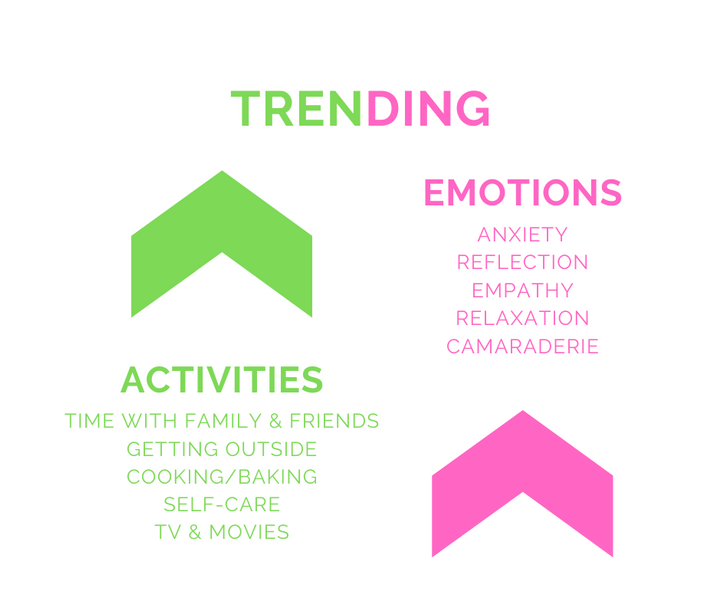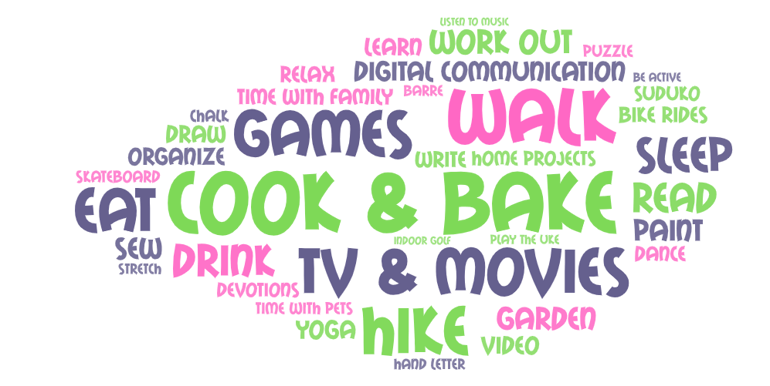Human Life
How We Shelter In Place
by Alex George
Apr 10, 2020
Over the past week, responses to my Shelter in Place Survey have streamed in from our online community all over the United States. The survey provided great insights into how people are spending their time sheltered in place, but beneath the surface, responses gave a much deeper understanding of how people are feeling and coping with the mandate to stay home and do their part to stop the spread of COVID-19.
Before jumping into the results and takeaways of the survey, here are a few details about the nearly 200 people that completed this Shelter in Place Survey.
77% of the respondents were between the ages of 18-45, with the remaining 23% 46 years of age or older.
WFH
Exactly two-thirds of those that completed the survey are working from home at the time the survey was taken. To give a bit more context on those working from home, 75% of them have been working from home for at least three weeks. Not quite long enough to build new habits, but well on their way.
Who's at Home?
92% of survey respondents live with other people. Of those living with others, 32% live with a child under the age of 15.
Shelter In Place Survey
The goal of this survey was to uncover trends in the way people are spending time sheltered in place, how they are feeling about it, and what measures they are taking to cope with the experience. Each of the seven open-ended questions examined different aspects of being sheltered in place, and it was truly amazing to read through how our online community is finding creative solutions to life at home.

Trends
At first glance of this trend graphic, the trends may appear obvious. For example, spending more time getting outside, cooking/baking or watching TV and movies makes sense when you are social distancing in your home. The anxiety of your current situation and the ability for people to empathize with others that are going through the same challenges make a ton of sense.
However, a feeling of camaraderie and spending more quality time with friends and family don't quite equate. More than half of the responses (58%) stated that spending more time, either in real life (IRL) or virtually, with family and friends was the Best Part of Being Sheltered in Place. No gym? No problem! Despite not being able to go to the gym or attend a fitness class, people are finding alternative ways to practice self-care remotely through activities like online workouts, local walks/hikes, and meditation.
The survey also asked about the most difficult part of sheltering in place and followed that up with a question about how respondents were handling those challenges. This is where coping mechanisms and human resiliency came into play.
Among the top coping mechanisms, were aspects of digital socialization, indoor and outdoor movement, personal activity and quiet time. Diving deeper a trend appeared - nearly all of the survey responses included a mixture of these four categories, resulting in an idea that respondents are creating a balance in their new normal. Although many aspects of their daily life had changed drastically, they've found a way to carry on, displaying resilience in the face of adversity. The human way.
In This Together
Although there is a lot of uncertainty around how much longer we will be asked to shelter in place and maintain our social distance, one thing is certain. We are all in this together. Lean on each other and communicate. A simple "How are you?" text can go a long way. Lastly, if you're struggling for ideas on how to cope with some of the challenges facing your daily life, check out the word cloud below. It was created from the survey results and can provide some different perspectives on activities while sheltering in place.

Thanks for reading, and stay safe.
Personal Note: Thank you to everyone that took a few minutes out of their day to participate in the Shelter in Place Survey. Working on this article brought a huge smile to my face and I hope it did for you while reading.